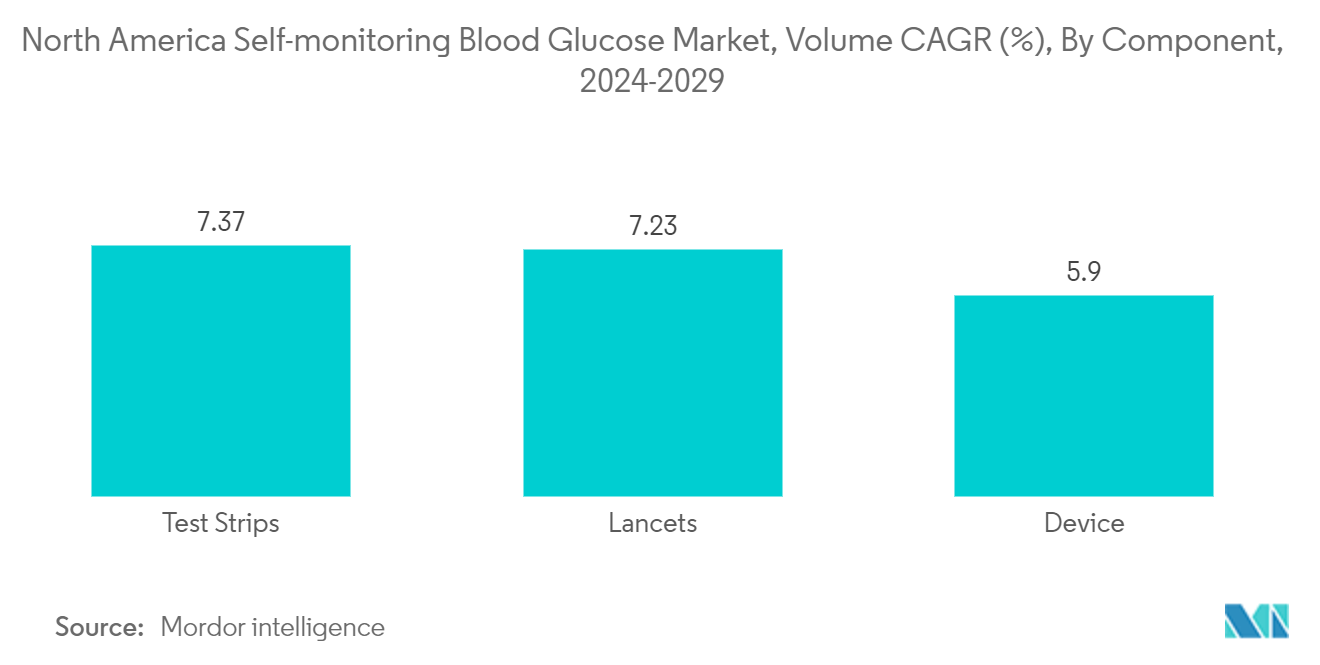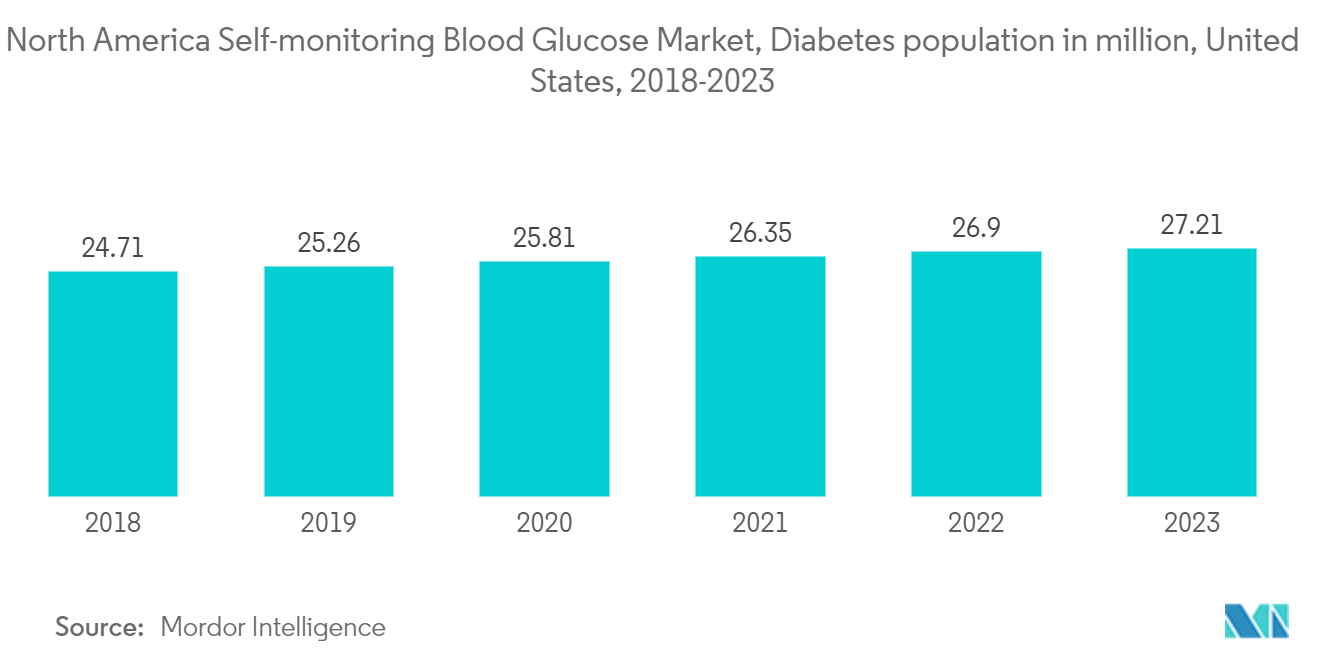Market Trends of North America Self-monitoring Blood Glucose Industry
Blood Glucose Test Strips Held the Largest Market Share in Current Year
In the current year, blood glucose test strips accounted for about 82% of the North America SMBG market. The Glucometer is a one-time purchase. The Glucometer is a one-time purchase. However, test strips, on the other hand, are a continuous investment, as a test strip needs to be disposed of after one use. However, test strips, on the other hand, arconstantuous investment. Thus, it presents a considerable cost impact to the consumers.
Overall, the demand for blood glucose test strips will increase significantly over the forecast period. Development within the market studied is expected to be spurred by the rising diabetic population. While an average glucose meter lasts anywhere between six months and three years, presenting a one-time cost, during the same time frame, the corresponding use of multiple (in the range of thousands) test strips may occur, causing a recurrent cost impact.
Technological advances in the test strips segment are driving the market in the forecast period, for instance: Some test strips, not so commonly used these days, do not require a meter. When blood is placed on the active part of the strip and then wiped off after a specified number of seconds, the reagent will change color and the result can be obtained by matching the colour of against a colour chart on the side of the pot.
It is less accurate than using a blood glucose meter but the test strips can often be cheaper.The rise in national awareness of diabetes is anticipated to drive the adoption of both SMBGs and CGMs on account of the prognostic and diagnostic treatment of diabetes.

The United States is Expected to Dominate the North America Self-monitoring Blood Glucose Market.
In the United States, the prevalence of diabetes has increased dramatically during the last two decades, driven by the increased majority of obesity and lifestyle changes. Diabetes ranks among the fast-growing chronic diseases in the United States. About 1.75 million US citizens are diagnosed with diabetes every year. The country also has the highest obese population, a prominent cause of Type 2 diabetes. In the United States, the prevalence of diabetes has increased dramatically during the last two decades, driven by the increased majority of obesity and lifestyle changes. Diabetes ranks among the fast-growing chronic diseases in the United States. About 1.75 million US citizens are diagnosed with diabetes every year. The country also has the highest obese population, a prominent cause of Type 2 diabetes.
The self-monitoring blood glucose devices are garnering widespread adoption due to the availability of reimbursement options for glucose meters. Glucose meter devices must be replaced within six to eight months, which is costly. As a result, most people prefer health insurance plans that cover most of their total expenditure on healthcare devices. Such schemes cover the costs of diabetes testing supplies, test strips, and blood glucose meters. For example, Medicare, the federal health insurance program in the United States, covers approximately 80% of the cost of BGM devices for diabetic people.
The growing awareness among people regarding advanced diabetes care products may positively impact North American Self-Monitoring Blood Glucose Devices in the coming years.

